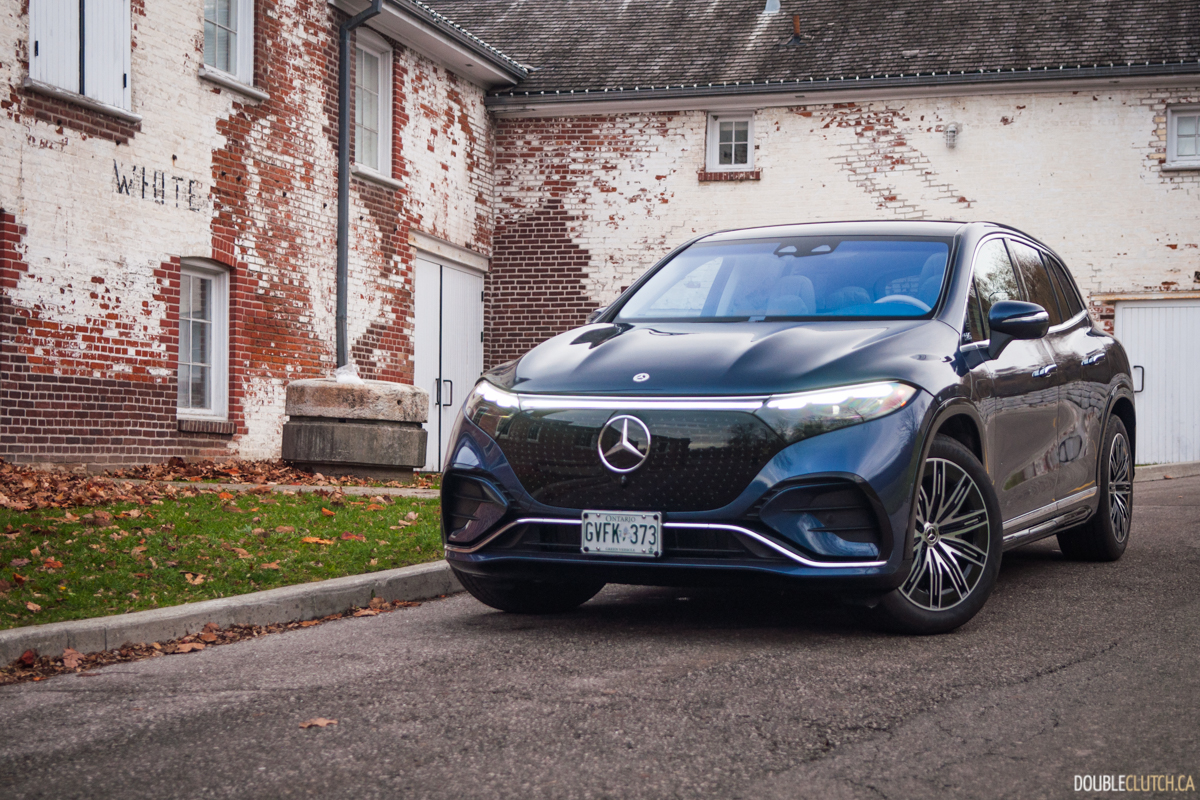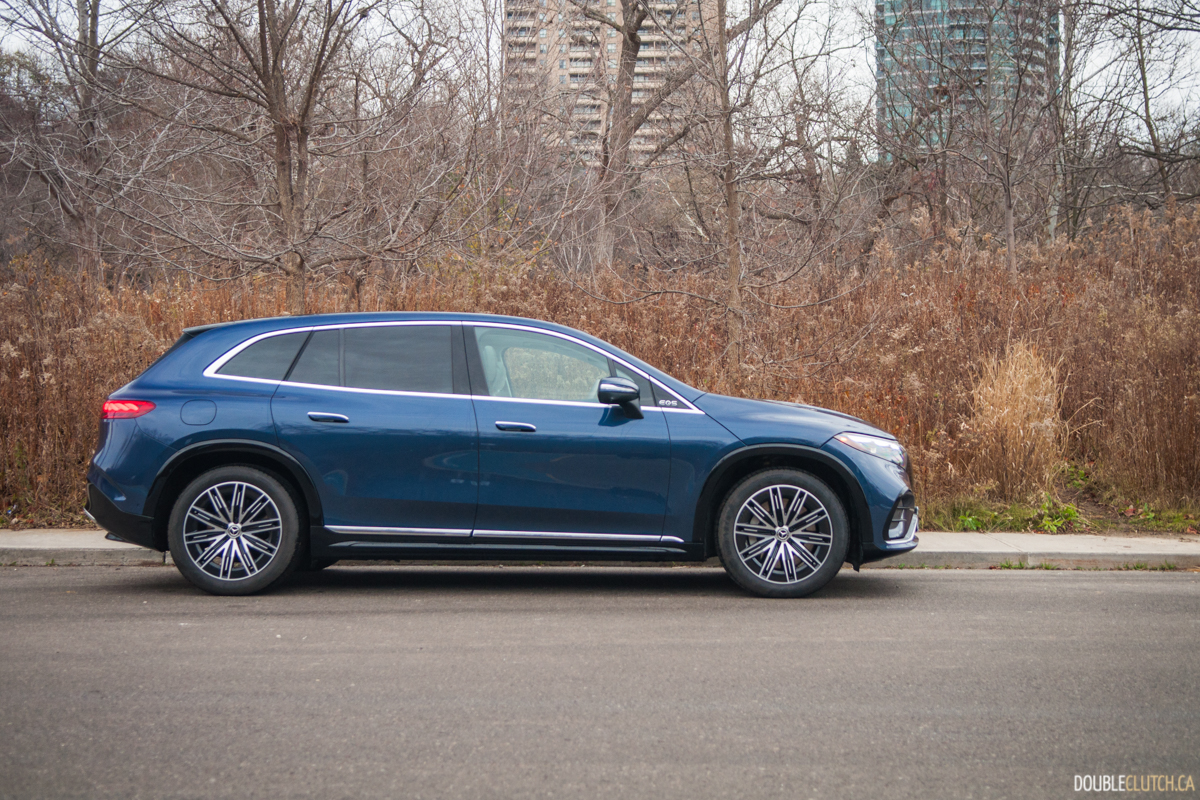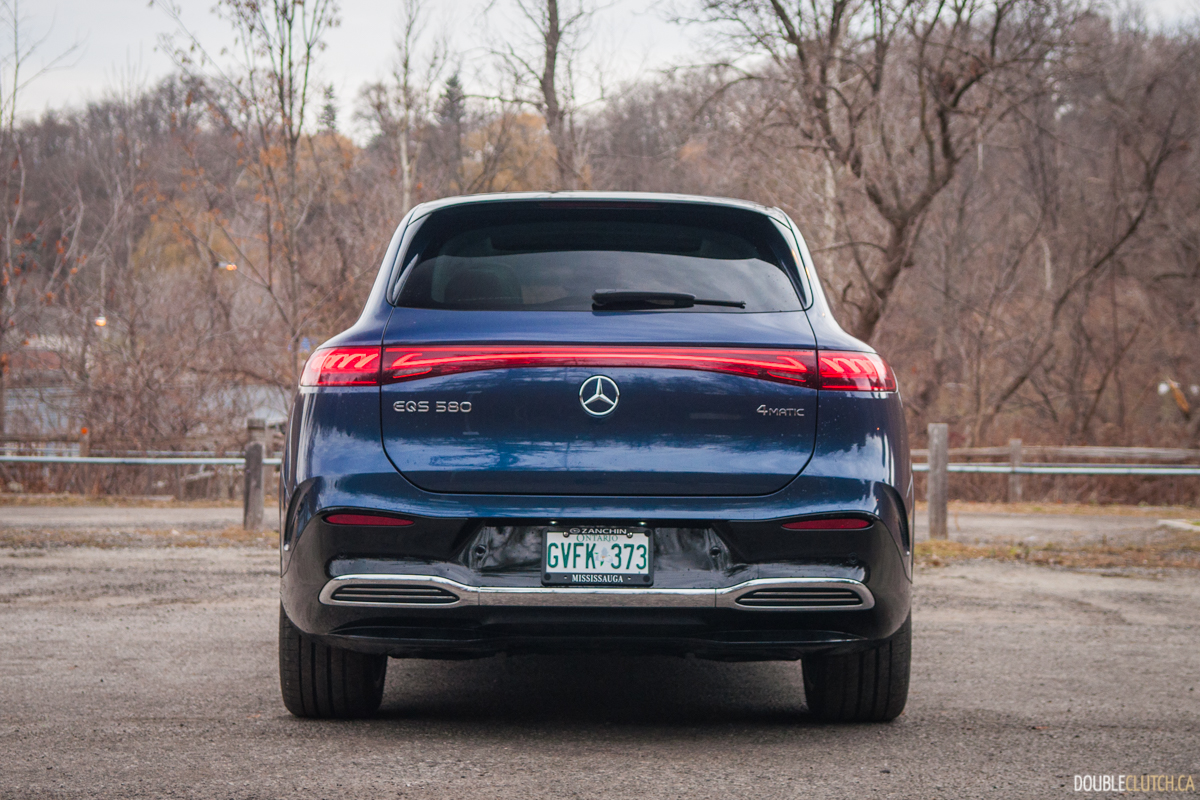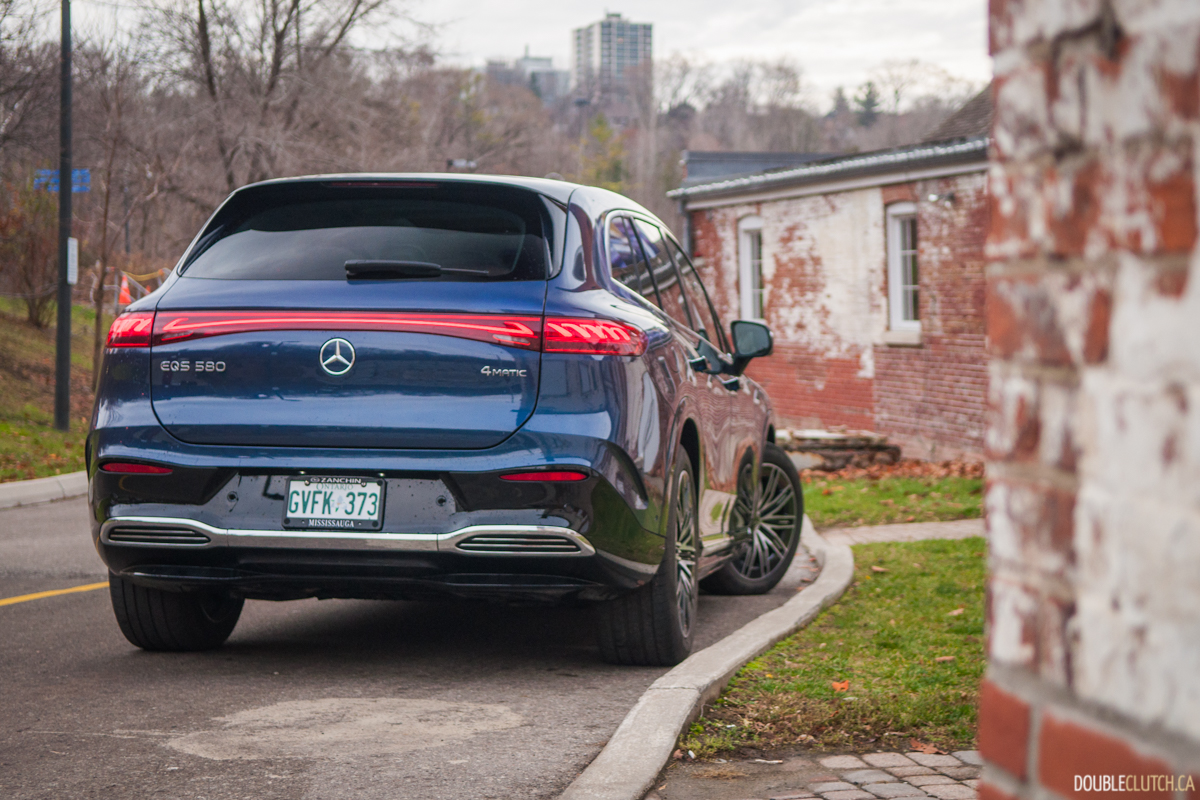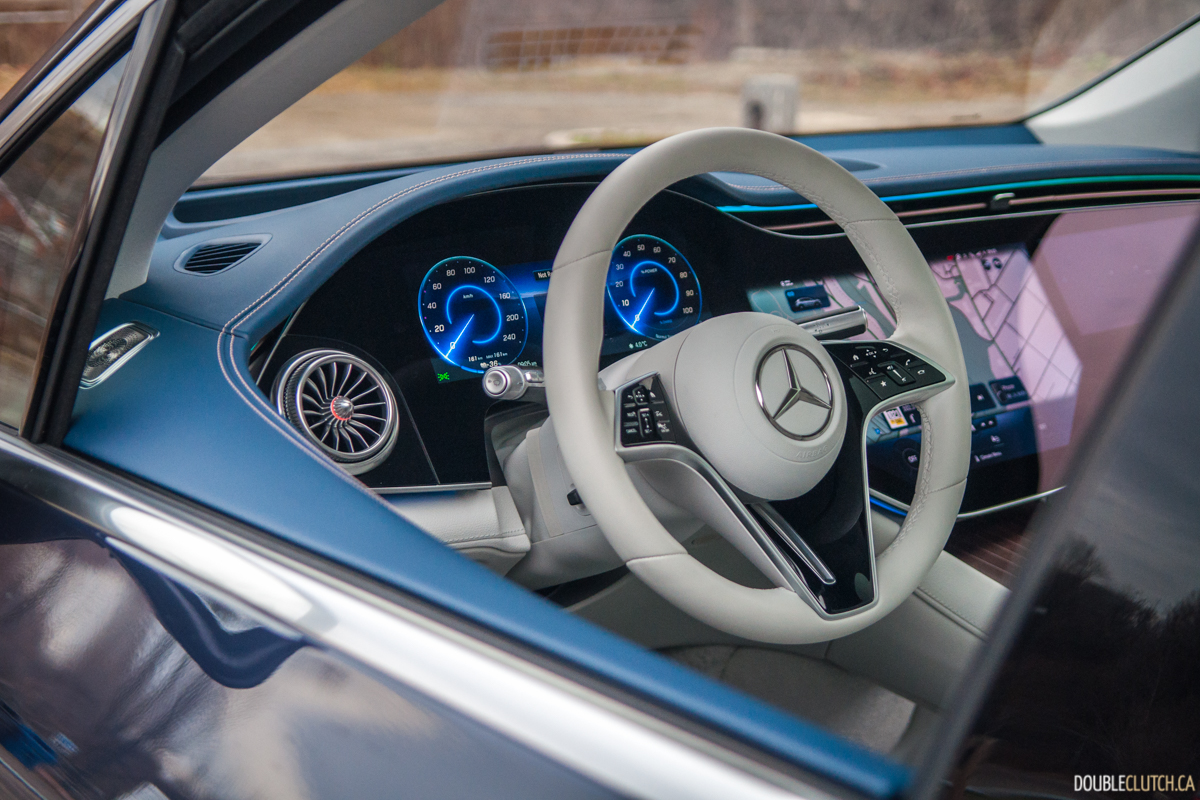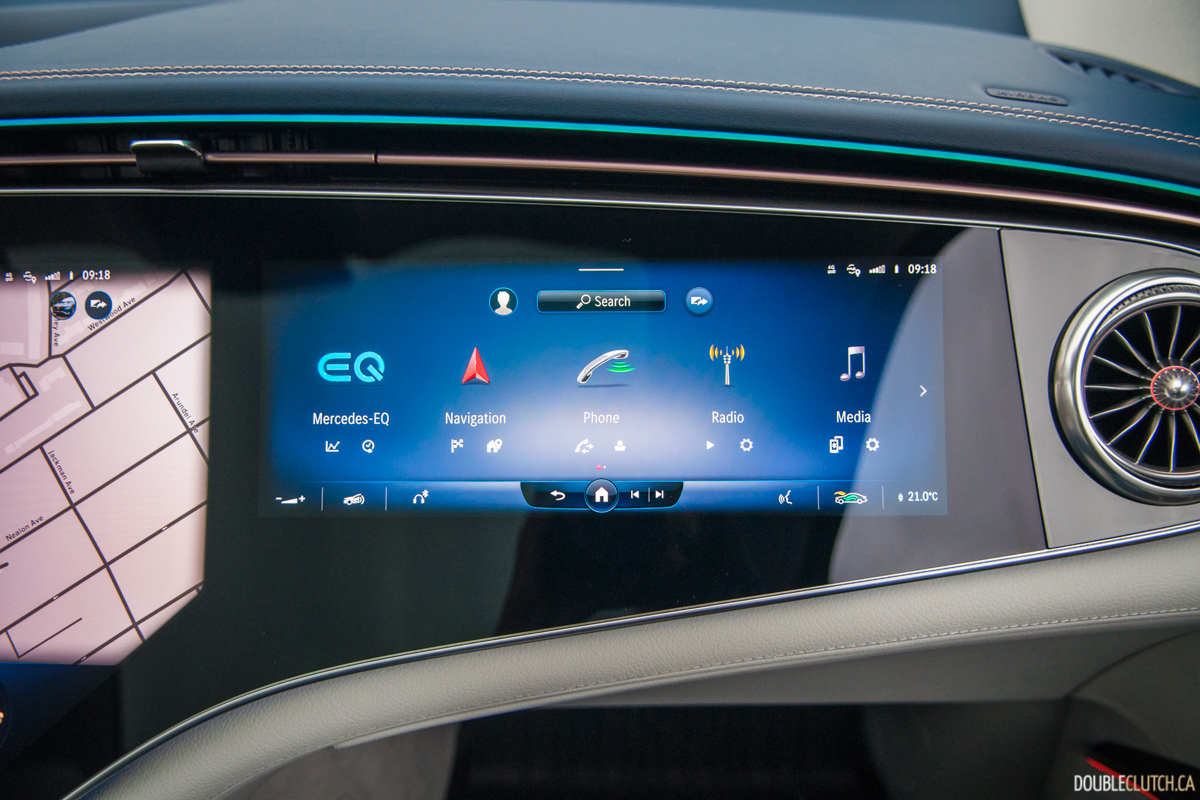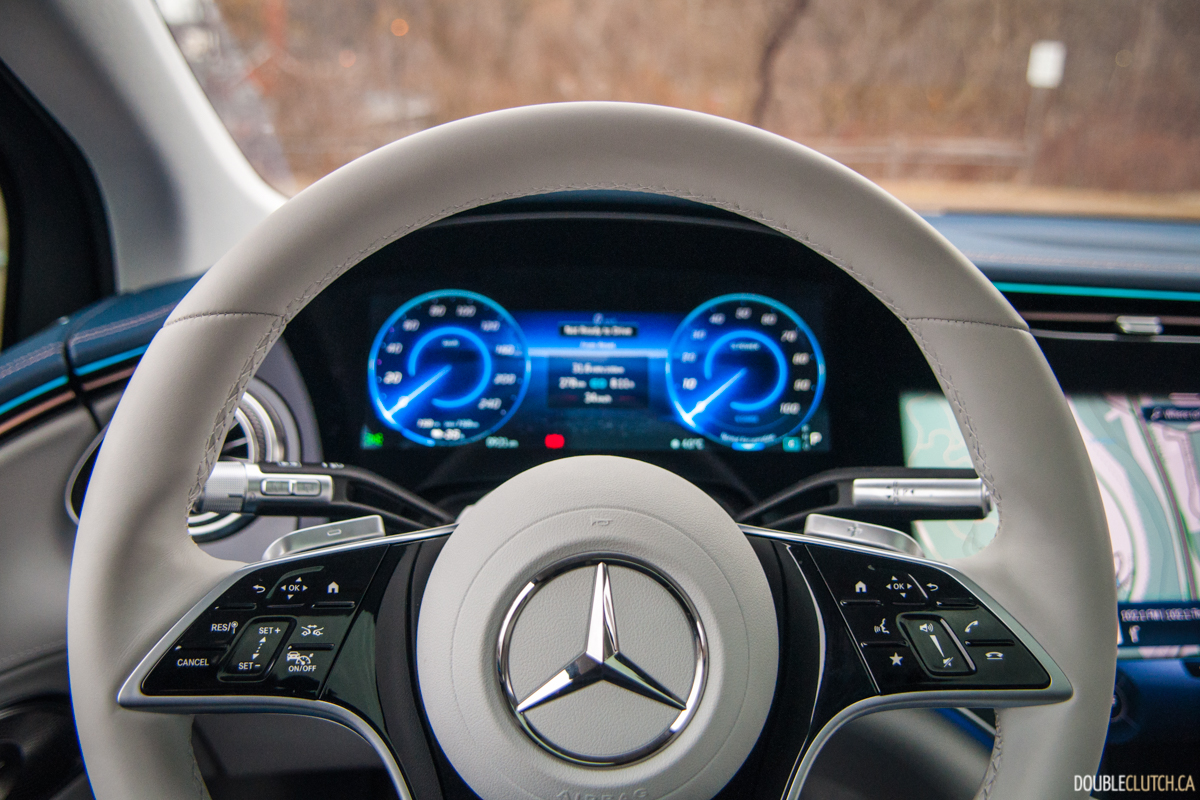Electrifying a big luxury sedan (or SUV) actually makes sense. Mercedes seems to agree — for years, the S-Class has been a leather-lined, tech-laden sensory deprivation chamber on wheels, so replacing that loud, harsh, and outdated gas engine with a whisper-quiet electric motor that hauls ass is a no-brainer. Enter the 2023 Mercedes-Benz EQS 580 SUV.
And for as long as the S-Class has been a sensory deprivation chamber on wheels, it’s also been the gold standard of luxury vehicles. So naturally, the first model launched in Canada last year under Mercedes’ all-electric EQ sub-brand was the EQS, a flagship sedan billed as an electric S-Class. Now, Mercedes is following up with an SUV version, aptly (and imaginatively) called the EQS SUV. But like the sedan, the sport-ute version misses the mark in one key area — driving dynamics, or the lack thereof.
The EQS’ propulsion system certainly isn’t the problem here. Its two electric motors — one up front, the other out back — work together to produce a heady 536 hp and 633 lb-ft of torque. Floor it and the EQS makes pretty cool spaceship noises as that wallop of instant torque rockets you from zero to 100 km/h in just over four seconds. We couldn’t verify that ourselves, but we can certainly say the EQS feels plenty fast. When you’re not blasting off from each stoplight, the EQS’ otherwise whisper-quiet operation, generous sound insulation, and super cushy dampening make mundane drives serene, especially ones in the rain.
No, the problem with the EQS is twofold: steering and the brake pedal. Listen, we get that steering feedback is becoming a lost art, but the EQS feels completely numb and disconnected, like you’re wearing oven mitts while trying to sweep. Most people don’t care about steering feel, but a good luxury flagship inspires confidence in your inputs, and a steering wheel that doesn’t talk to you doesn’t inspire confidence.
The brake pedal is another point of contention with the EQS. Most of the time, you won’t have to think twice about how much effort you’ll need to stop it, but every once in a while, it’ll be too much. Thing is, it’s totally random: just when you think you’ve figured it out, next thing you know everyone in the car smacks their head onto their headrests, and they’ll think you just got your licence. Fortunately, you can beat this inconsistent pedal feel by engaging max regen mode — that is, the strongest regenerative braking setting — with a tug of the steering wheel, uhh, paddle shifter. Still, the fact that you’ll have to do this every time you start it up because the EQS won’t default to the last regen setting is a little silly.
Charging is another challenge with the EQS, but how much of an inconvenience it’ll be depends on how easily you can access a charger. Mercedes says recharging the EQS SUV’s massive 107.8 kWh battery from 10 to 100 per cent will take just over 11 hours using a Level 2 (220 V) charger. Plug into a Level 3 fast-charger, and that’s cut down to just over 30 minutes. Trouble is, if you rely on public charging infrastructure, you’re pretty much screwed: we plugged in around noon one day with about 25% of a charge remaining, and the EQS’ helpful on-board computer estimated we’d cross the 100% mark at 4 a.m. the next morning.
Moreover, colder weather will wreak havoc with your range. On paper, Mercedes says you can expect about 460 kilometres on a single charge, but we couldn’t do better than 350 km in the chilly late November air. Living with the EQS SUV may take a pretty sizable lifestyle adjustment, but then again, if you can afford one of these and you don’t live in a condo or park on the street, you can also afford your own EV charger.
In the flesh, the EQS sedan pulls off the whole “spaceship for the road” vibe and manages to stand out from the droves of the SUVs and crossovers that dominate our roads. It’s a striking design, but the EQS SUV isn’t so fortunate; despite the familial resemblance between the two — especially up front — the EQS SUV tends to blend due to the taller greenhouse, cargo area, and generally softer lines. People will ask “what is that?!” when you hop out of an EQS 580 sedan, but with the EQS SUV, you’re pretty invisible.
Step inside, though, and the EQS feels otherworldly. Mercedes’ 56-inch “hyperscreen” display takes pride of place across the dashboard, but don’t let the name fool you — it’s three separate screens concealed behind one big, shiny black panel. Semantics aside, this setup houses an all-digital instrument cluster for the driver, a very large central touchscreen for main infotainment duties, plus a third (and questionably useful) display for the front passenger. Oh, and there are two more facing the rear passengers. Frankly, it’s a little much.
But this whole setup is dazzling, and not to mention swift. The brains behind the screen is Mercedes’ latest MBUX infotainment system. Having done away with the touchpad, this setup now leans heavily on touchscreen inputs and voice commands. Once you master the learning curve, MBUX is one of the more intuitive systems out there. There are even some cool tech tricks up the EQS’ sleeve, like a navigation system augmented by virtual reality, a camera system that’s incredibly useful especially if you can’t park nose-in, and of course, a full suite of active driving assists that almost enable the EQS to drive itself.
Clearly, all the R&D bucks went into the tech, because we have some nit-picks we wouldn’t expect out of a flagship. Fit-and-finish is mostly good, but some materials feel questionably upscale and we noticed some rattles that aren’t really befitting of a flagship. Beyond that, headroom is a little tight for rear-seat passengers, the dearth of physical switchgear is off-putting, and we’ve definitely felt stronger massaging seats. But if you can look beyond the flaws, the cabin is a fabulous environment — the leather feels buttery smooth, the seats are supremely comfortable, and the ambient lighting sets the mood quite well.
On price, the EQS SUV doesn’t come cheap. Like the sedan, expect to fork over at least a buck-fifty for the good stuff — the base EQS 450 SUV starts at $136,000, but that jumps to $158,500 for the 580. Pile on the options — our tester features roughly a base Nissan Kicks’ worth of options — and you’re looking at a bottom line of just under $180,000. That’s a lot of coin; if you’re a tech junkie who demands the latest-and-greatest while being coddled at every moment behind the wheel, the steep price of admission into the electric Mercedes club may be worth it.
But here’s the thing: a flagship vehicle is supposed to be a shining example of everything a car company does well. The 2023 Mercedes-Benz EQS 580 SUV’s driving dynamics and even some interior appointments miss the mark, but there’s certainly a tech overload to distract you from the shortcomings. It’s like one of those “smart” fridges with WiFi and a tablet in the door — there’s lots of gimmicky tech at your disposal, but at the end of the day, the EQS SUV is one expensive appliance.







